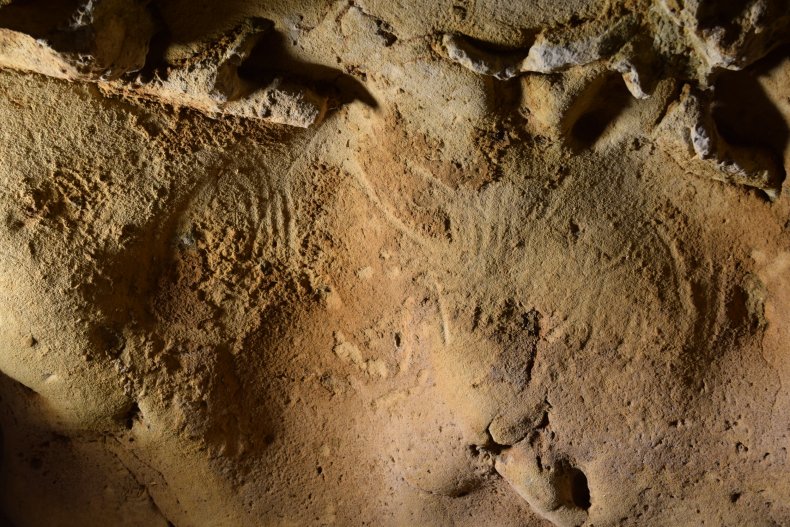The oldest known Neanderthal engravings have been identified by researchers from a cave in France, a study has found.
The markings can be found on a wall in La Roche-Cotard cave, located in the center of the country. Researchers that had visited the cave site prior to the latest study had observed the markings on the cave wall.
Now a team of scientists has found that the markings were not only deliberately made by humans, but that Neanderthals were responsible, according to a study published in the journal PLOS ONE.
The scientists dated the engravings to more than 57,000 years ago, making them the oldest produced by Neanderthals discovered to date.

Their findings provide a fascinating glimpse into the lives of one of our closest extinct human ancestors. Above all, they lend support to a growing body of evidence that Neanderthal behavior was comparable in complexity and diversity to prehistoric members of our own species, Home sapiens.
Over the past decades, studies have demonstrated numerous examples of culturally complex activities in Neanderthals. But researchers still know relatively little about their symbolic or artistic expression.
To date, only a small handful of symbolic creations have been attributed to Neanderthals, and the interpretation of these is often fiercely debated. But in the PLOS study, the authors conclude that the engravings from La Roche-Cotard cave are "unambiguous examples of abstract Neanderthal design."
The team of researchers analyzed the cave markings and created 3D models. They also compared them with known and experimental human markings. Given the shape, spacing and arrangement of the engravings, the scientists concluded that the markings were most likely deliberately produced by human hands in an organized and intentional manner.

Using a specialized dating method, the team also found that following ancient human occupation of the cave, the entrance was sealed off by sediments around 57,000 years ago—long before modern humans had established themselves in the region.
The sealing off of the cave prevented anyone from accessing it until its discovery in the 19th century and its first excavation in the early 20th century.
This dating evidence, combined with the fact that stone tools found in the cave are of a type only associated with Neanderthals, provides strong evidence that the engravings on the wall were made by this extinct species.
The symbols documented in the study are considered to be "non-figurative" so what they represent and the meaning or intent behind them is unclear.
Intriguingly, they are of similar age to cave engravings made by Homo sapiens in other parts of the world. The latest evidence forms part of an increasingly accepted school of thought that Neanderthals led more complex and diverse lives than previously assumed.
Nhận xét
Đăng nhận xét